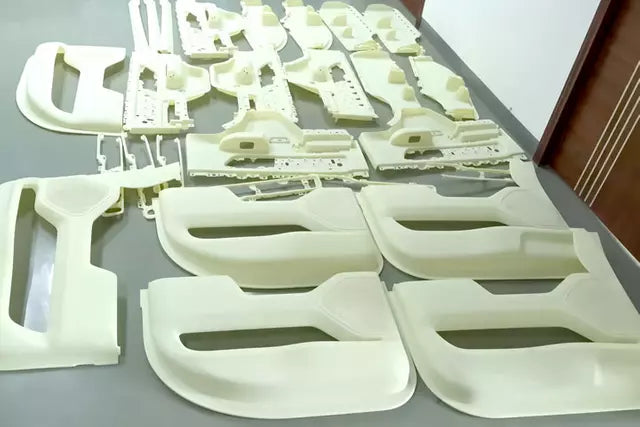
Chilie Rapid Vacuum Casting Servies
Supply reliable quality and quick response on precision machining and assembly parts to support our customers focus on their business and develop their market.
What is Vacuum Casting
Exploring the Potential of Vacuum Casting: A Comprehensive Guide
In the realm of rapid prototyping and low-volume production, vacuum casting emerges as a versatile and cost-effective solution. But what exactly is vacuum casting, and how does it revolutionize the manufacturing process? Join us as we delve into the intricacies of vacuum casting and uncover its profound impact on various industries.
Vacuum casting, also known as silicone molding or polyurethane casting, is a sophisticated manufacturing technique used to produce high-quality, low-volume parts with intricate details and excellent surface finishes. It involves creating a silicone mold from a master pattern and then injecting liquid polyurethane resin into the mold under vacuum conditions. This process replicates the original part with exceptional accuracy and consistency, making it ideal for prototyping, product development, and small-batch production.
How Does Vacuum Casting Work?
The vacuum casting process begins with the creation of a master pattern, typically made from CNC machining, 3D printing, or handcrafted from a desired material. This master pattern serves as the template for the silicone mold. Next, a two-part silicone rubber is poured around the master pattern to create the mold. Once the silicone has cured, the master pattern is removed, leaving behind a cavity that precisely matches the original part.
The mold is then placed in a vacuum chamber, and liquid polyurethane resin is poured into the mold cavity. The vacuum is applied to remove any trapped air bubbles and ensure complete resin infiltration into the mold. After curing, the resin solidifies, and the mold is opened to reveal the final part. The part is then removed from the mold, trimmed, and finished to meet the desired specifications.
Key Advantages of Vacuum Casting:
- Cost-Effective: Vacuum casting offers a cost-effective solution for producing small quantities of parts without the high upfront costs associated with traditional manufacturing methods.
- Quick Turnaround: The rapid prototyping capabilities of vacuum casting allow for fast iteration and validation of design concepts, reducing time-to-market.
- High-Quality Parts: Vacuum casting produces parts with excellent surface finishes, intricate details, and dimensional accuracy, suitable for functional testing and presentation models.
- Material Versatility: A wide range of materials, including various grades of polyurethane resins, can be used in vacuum casting to simulate the properties of final production materials.
- Customization: Vacuum casting enables customization and personalization of parts, making it ideal for niche markets and specialized applications.
Yacum casing, aso caled urehane casing or sicone molding,it is a fast and low-cost techmolgy to ceatle a protolype when you need muliple parts or muline colors,it also to be used to
closely simulate final molded parts or finished products.
Vacuum Casting Process

Materials for Vacuum Casting
Different from CNC machining, the materials that vacuum casting will use is in grain not block, which can be melt easily.
Below are the most common materials option applied to vacuum casting for your reference.
Please check the data sheet of materials according to your need to choose suitablee materials below or contact us for more detail information and advic
| Materials used for vacuum casting | Property | Equivalence |
| PX100 | Ivory white and black, general flexibility, resisting 70℃ | ABS |
| PX210 | Transparent, high hardness and flexibility | PC |
| PX118 | White, easily being dyed and having painting on | ABS |
| PX521 | Transparent and hard, resisting 110℃ | PMMA, PC |
| UP4280 | White, excellent hardness and flexibility, resisting 90℃ | ABS |
| UP5690 | Transparent, white, high and flexible hardness | PP,PE,HDPE |
| 8260 | White, general flexibility, fire resistant | ABS |
|
8400 |
Milk white, black, colors customized, painting available | Rubber |

Why choose Chilie's CNC Vacuum Casting services
- Short lead time
- Low cost for small batch production
- Identical with master part
- Excellent appearance
- Easily operation
- High repeatability
